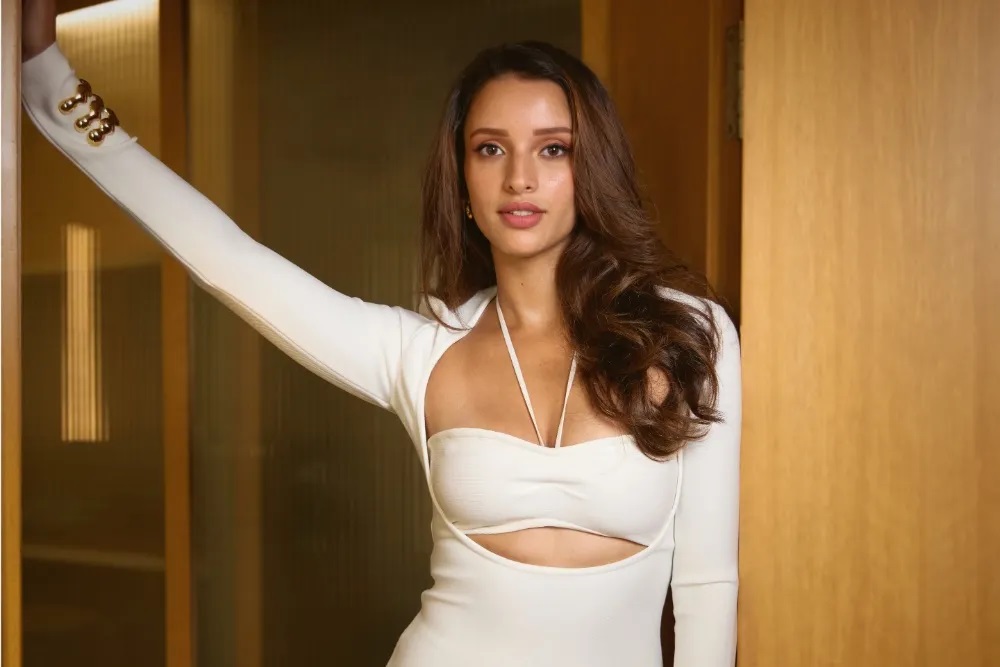Tripti Dimri has long been recognized as one of Bollywood’s rising stars, delivering captivating performances in films like Laila Majnu and Bulbbul. Her career trajectory, however, has recently sparked debate among fans and critics alike, with many questioning whether her recent choices signal a move towards calculated career growth or represent a series of missteps influenced by industry pressure. Following her involvement in Bad Newz (a thematic sequel to Good Newwz), particularly the bold scenes in the song “Janam” with Vicky Kaushal, the conversation around Dimri’s career has intensified. Is she making strategic decisions to expand her repertoire, or is she being coerced by Bollywood’s demanding expectations?
The Backlash from “Bad Newz”
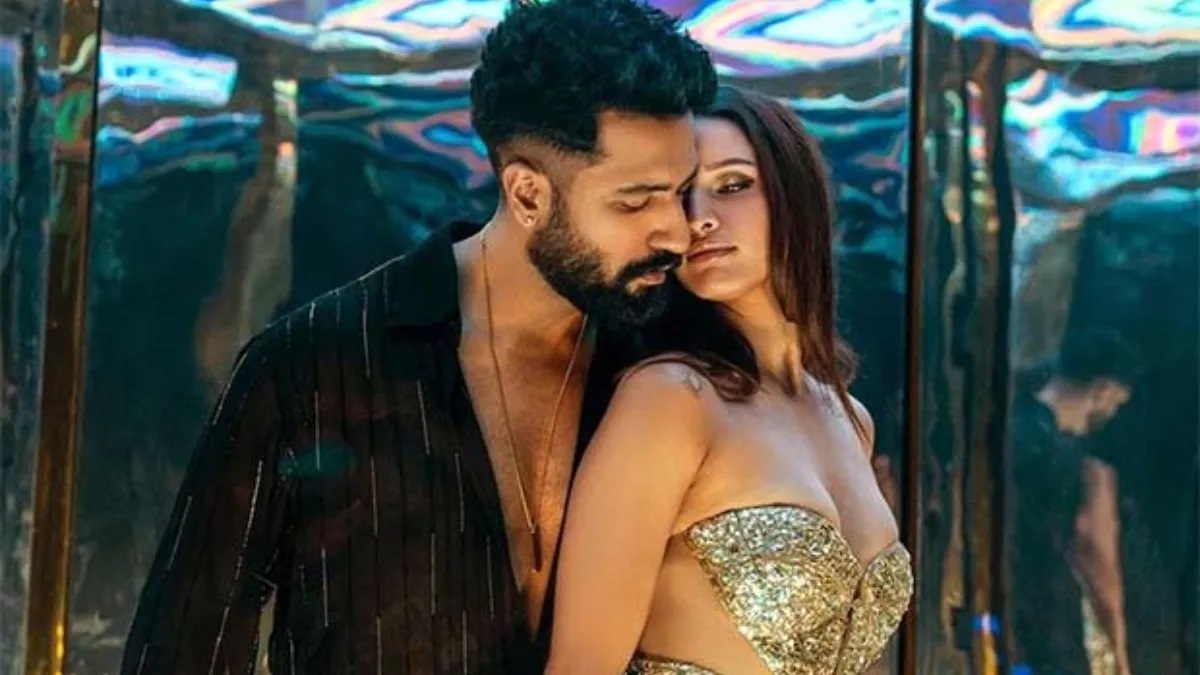
The controversy surrounding Bad Newz and the song “Janam” highlighted a significant double standard in the way male and female actors are treated in Bollywood. Dimri faced harsh criticism for her role, while her co-star Vicky Kaushal seemed to evade the same scrutiny. This disparity is a recurring theme for female actors, who are often subjected to stricter expectations, especially when portraying intimate or bold scenes.
The backlash against Dimri reflects a larger societal issue. Women in Bollywood are frequently held to a different set of standards than their male counterparts. While male actors are often praised for their daring choices, female actors are criticized for theirs.
For Dimri, this raises an important question: is the negative attention she’s received a result of poor career choices, or does it highlight the industry’s and society’s bias against women taking control of their narratives?
From Indie Darling to Mainstream Spotlight
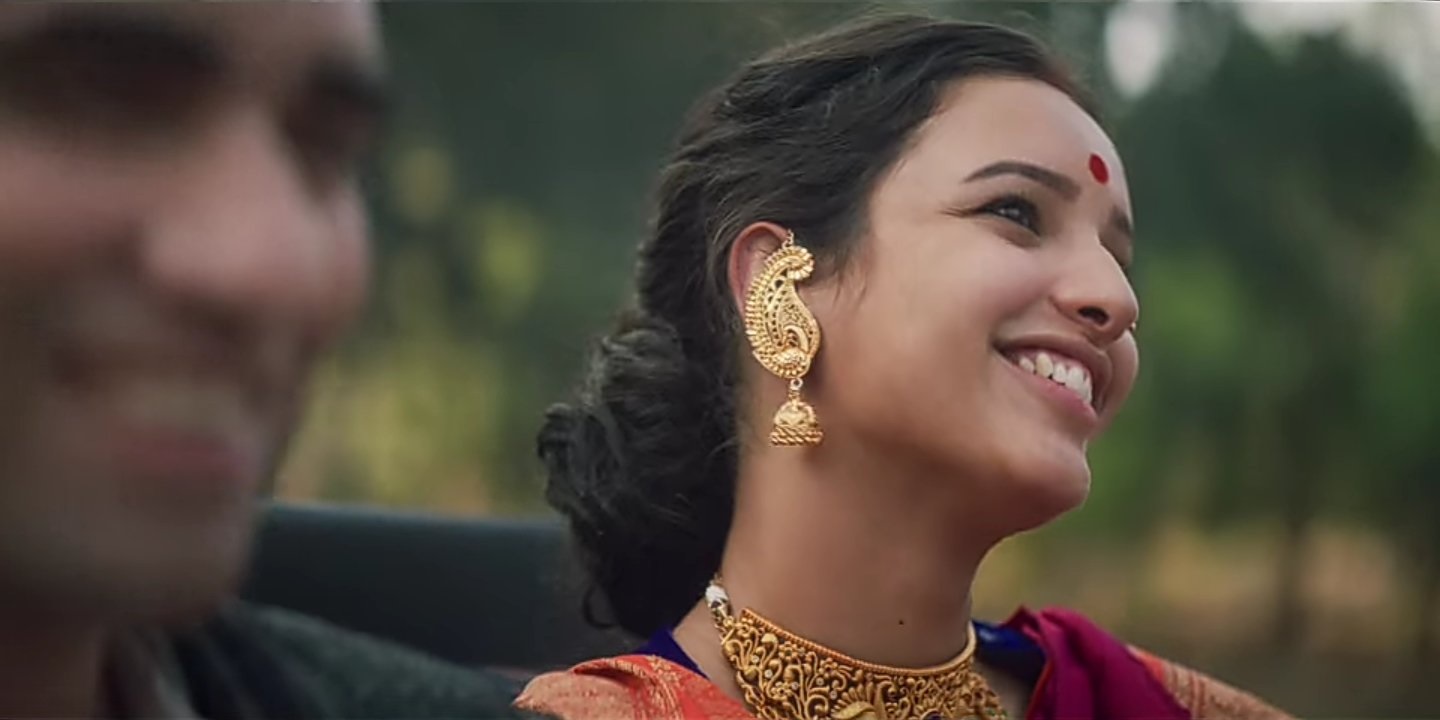
Tripti Dimri’s career journey has always balanced critical acclaim with attempts to break into mainstream Bollywood. Films like Laila Majnu and Bulbbul earned her praise for her ability to bring depth and vulnerability to her roles, but they didn’t translate into major box-office success. Despite her powerful performances, she remained an indie darling rather than a mainstream ‘star’.
Her ultimate breakthrough came with Animal, which, despite offering her limited screen time, positioned her within the commercial spotlight. The film was controversial, particularly for its depiction of violence and misogyny, a complete 180 degree switch from Bulbbul and Qala, where the female protagonists were victims of patriarchy, faced assault and navigated complex psychological trauma.
Women may have loved Bulbull and Qala yet Animal is what undeniably expanded her visibility to the wider audience. It is easy to notice how Dimri’s role seemed to prioritize aesthetics over substance in Animal, with her acting capabilities often overshadowed by the film’s emphasis on spectacle. This pivot reflects a broader struggle for female actors in Bollywood—finding roles that offer visibility while still allowing for meaningful performances.
Embracing the “Male Gaze”
The concept of the “male gaze” is often brought up when discussing Tripti Dimri’s recent roles. This refers to how female characters are portrayed primarily through the perspective of male viewers, emphasizing their desirability. Critics have argued that Dimri’s recent career moves, particularly her roles post-Animal, seem to lean into this gaze. Her willingness to take on roles that cater to these traditional portrayals may be an attempt to secure a more prominent place in a highly competitive industry.
Yet, there’s also a strategic side to her decisions. In an industry notorious for typecasting, adopting roles that align with current cinematic trends can be a way for actors to stay relevant.
Dimri’s decision to embrace mainstream, glamorous roles may have been a calculated move to keep her name in the spotlight, demonstrating her versatility even at the risk of momentarily compromising her artistic direction.
The Tightrope of Versatility vs. Typecasting
One of the most significant challenges for any actor in Bollywood is avoiding typecasting while trying to remain relevant. Dimri’s transition from critically acclaimed, indie films to mainstream roles in Animal and Bad Newz can be seen as a risky but necessary career decision. On one hand, she has managed to diversify her filmography and gain a broader audience; on the other, there’s a tangible risk of being pigeonholed into roles that capitalize more on her looks than her talent.
For female actors, the risk of typecasting is particularly pronounced. Once labeled, it can be challenging to break out of roles that focus solely on appearance or sensuality. Dimri, who showed considerable range in Bulbbul and Qala, may find herself increasingly typecast in glamorous, surface-level roles if she’s not careful. The delicate balance between showcasing versatility and becoming boxed into a specific image is something that many female actors struggle with, and Dimri is no exception.
Stepping into Comedy: A Calculated Shift
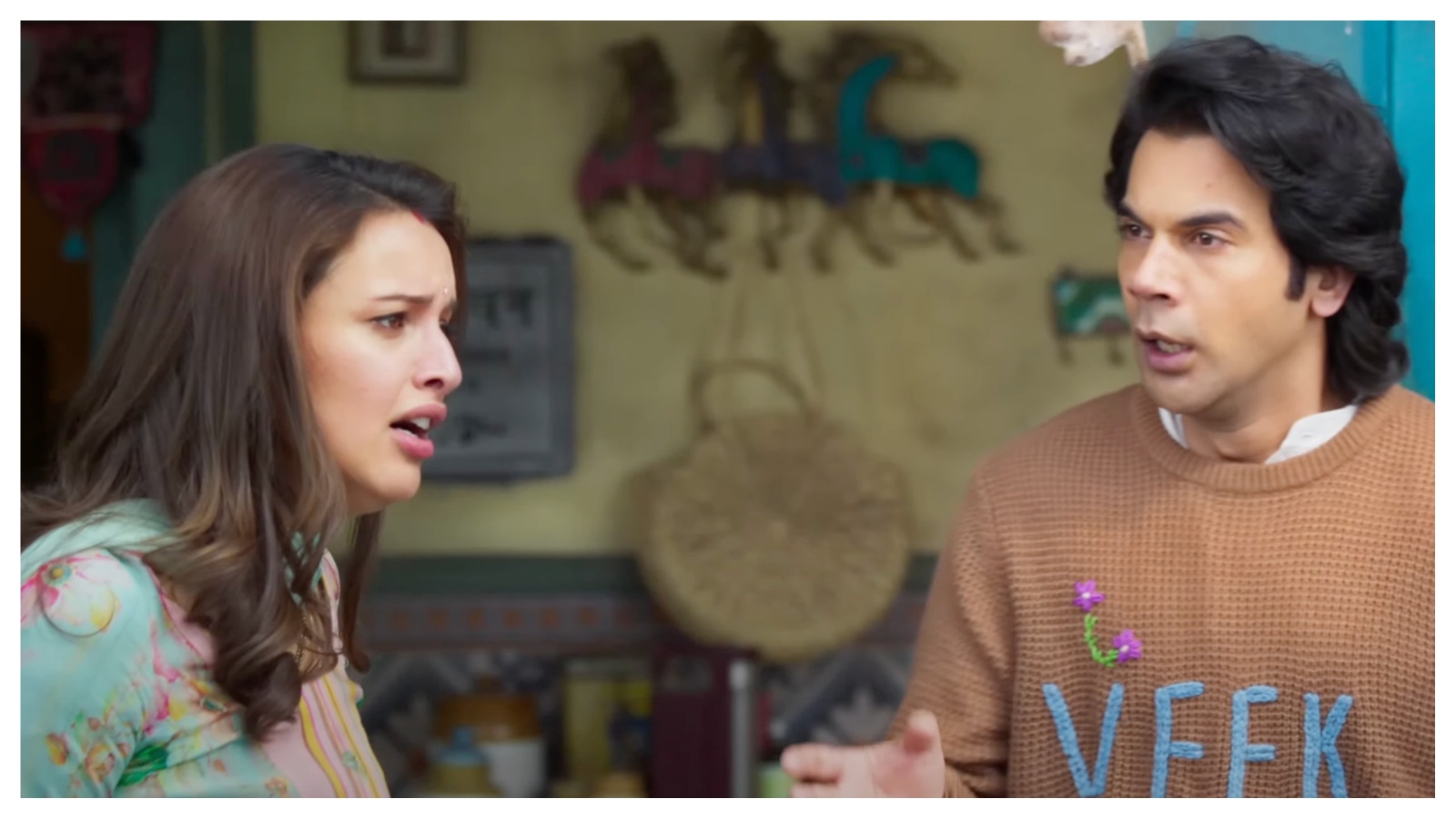
Recently, Dimri took a significant step in her career by venturing into comedy with Bad Newz, a thematic sequel to the 2019 hit Good Newwz. This move marked a departure from her previous dramatic roles. In an interview with Variety, Dimri admitted, “I personally gravitate towards drama a lot, because it’s my favorite genre. And I think somewhere I had found my comfort there.” The transition to comedy proved challenging, as she initially struggled to grasp her character and the comedic nuances of the film. “I remember the first few weeks, I was really struggling to understand the character, or to understand the beats of the film,” she said.
Dimri credited her director, Anand Tiwari, and co-stars Vicky Kaushal and Ammy Virk for helping her find her footing in the new genre. “Every day was a learning experience on the set because with comedy, it’s like you have to be in the moment truly, otherwise you will fall flat. So there were challenges, but it was a lot of fun,” she added.
This shift to comedy was a bold move, aimed at showcasing her versatility and breaking free from the intense, dramatic roles she had become known for.
Social Media and Public Perception
In today’s digital age, social media plays a significant role in shaping public perception of actors. Platforms like Instagram and Twitter provide a direct line to fans but also expose actors to relentless criticism and trolling. Following the release of Animal, Dimri’s social media following grew sharply, reflecting her increased popularity. However, this heightened visibility also attracted vocal detractors who were quick to criticize her choices, particularly her portrayal in Bad Newz.
The dual nature of social media—offering both acclaim and backlash—presents a challenge for actors like Dimri. Navigating this landscape requires resilience and a strategic approach to career choices.
She must decide whether to continue pursuing mainstream roles that guarantee visibility or to return to roles that play to her strengths as an actor, potentially sacrificing the reach that comes with blockbuster films.
Gender Disparities and Industry Expectations
The scrutiny that Tripti Dimri faces underscores the gender disparities that continue to plague Bollywood. Male actors are celebrated for taking on diverse and challenging roles, while female actors are judged more harshly for their choices. This disparity is evident in the way Dimri’s involvement in films like Bad Newz and Animal has been received. Unlike her male counterparts, who are often given the freedom to experiment, female actors face an uphill battle against societal norms and industry biases.
Dimri’s experience highlights the limited freedom female actors have when it comes to career decisions. They are often expected to adhere to certain roles or risk being judged not just for their artistic choices but for their morality and public image. This lack of latitude stifles creativity and restricts the types of stories that can be told from a female perspective.
The hope is that as the industry evolves, female actors will be afforded the same opportunities as their male counterparts to experiment, grow, and even make mistakes without facing undue scrutiny.
Learning from Peers: A Broader Industry Context
Dimri is not alone in facing these challenges. Actresses like Kriti Sanon and Shraddha Kapoor have also expressed their frustrations with the narrow expectations placed upon them. Their careers, like Dimri’s, have involved striking a balance between pursuing meaningful roles and staying visible in the commercial space.
Both Sanon and Kapoor have had to make choices that prioritized mainstream appeal, sometimes at the expense of roles that might allow them to fully demonstrate their abilities as actors.
This broader context is essential to understanding Dimri’s career moves. In an industry that is still evolving and where opportunities are limited, the choices she makes are an attempt to navigate a system that often places female actors at a disadvantage. The criticism she faces is less about her abilities and more about the systemic issues that limit the types of roles women can take on without facing backlash.
Dimri’s Future Prospects: Balancing Mainstream and Artistry
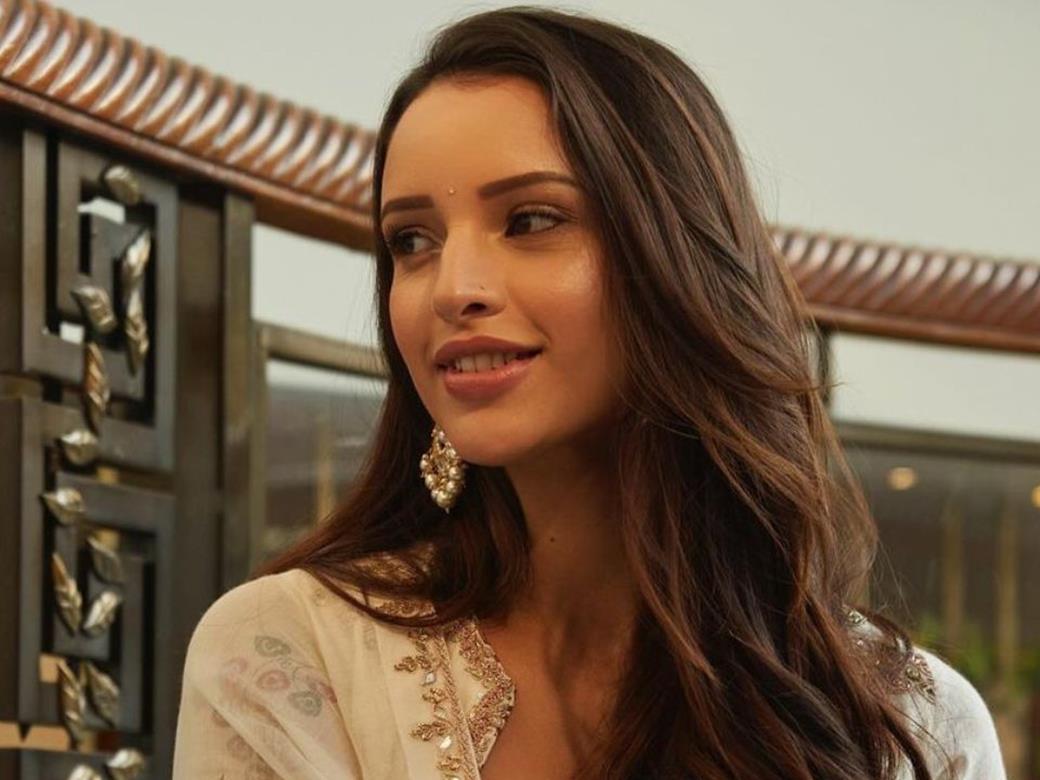
Looking forward, Tripti Dimri has a range of projects on the horizon, each of which offers the opportunity to further establish herself as a versatile actor. She is set to appear in the horror-comedy Bhool Bhulaiyaa 3, the lighthearted comedy Vicky Vidya Ka Woh Wala Video, and the drama Dhadak 2. These roles suggest that Dimri is intent on exploring different genres and expanding her range.
Additionally, she has expressed interest in pursuing opportunities in Western cinema, stating, “Even if I get a small part somewhere, I think it will be really helpful because I love the way actors work there.”
Dimri’s decision to broaden her horizons beyond Bollywood is indicative of her ambition and her desire to be recognized on an international scale. It also reflects a willingness to challenge herself, to step out of her comfort zone, and to embrace roles that might be different from what she’s done in the past. Whether or not these choices ultimately pay off, they show a commitment to growth that is commendable.
Conclusion: Missteps or Calculated Risks?
Determining whether Tripti Dimri is making poor choices with her recent film roles requires an understanding of the complex interplay between personal ambition, industry dynamics, and societal expectations. On the surface, her involvement in projects like Bad Newz might appear to be a departure from the artistic, nuanced roles she excelled in early in her career. However, these choices could also be viewed as necessary steps in navigating an industry that often values visibility above artistry.
The scrutiny Dimri faces is emblematic of the gender biases that still exist in Bollywood. Her decisions, while controversial to some, are attempts to secure her place in a challenging and often unforgiving industry.
As audiences, the more pertinent question might be why female actors are placed in a position where their choices are so heavily scrutinized compared to their male counterparts. For Tripti Dimri, as for many actresses, the journey is about more than just success—it is about survival, adaptability, and resilience.
In the end, perhaps the real test of her choices will be how they position her in the long term. As Bollywood continues to evolve, the hope is that actors like Dimri will be afforded the opportunity to make bold choices without facing disproportionate criticism. Until then, her journey is one that deserves recognition for its courage, and for her willingness to take risks in an industry that often prefers women to stay in their defined lanes.

